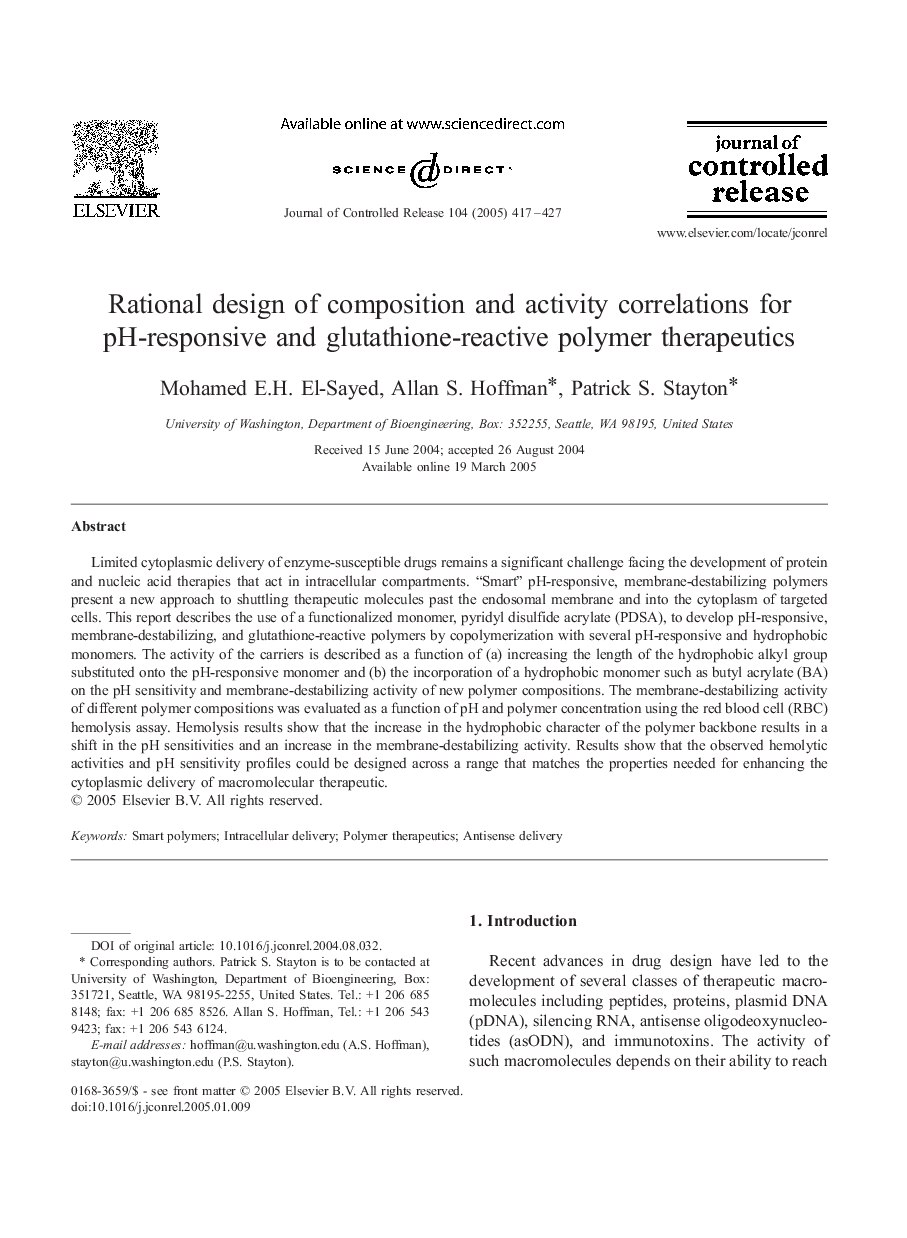| کد مقاله | کد نشریه | سال انتشار | مقاله انگلیسی | نسخه تمام متن |
|---|---|---|---|---|
| 10613517 | 986891 | 2005 | 11 صفحه PDF | دانلود رایگان |
عنوان انگلیسی مقاله ISI
Rational design of composition and activity correlations for pH-responsive and glutathione-reactive polymer therapeutics
دانلود مقاله + سفارش ترجمه
دانلود مقاله ISI انگلیسی
رایگان برای ایرانیان
کلمات کلیدی
موضوعات مرتبط
مهندسی و علوم پایه
مهندسی مواد
بیومتریال
پیش نمایش صفحه اول مقاله

چکیده انگلیسی
Limited cytoplasmic delivery of enzyme-susceptible drugs remains a significant challenge facing the development of protein and nucleic acid therapies that act in intracellular compartments. “Smart” pH-responsive, membrane-destabilizing polymers present a new approach to shuttling therapeutic molecules past the endosomal membrane and into the cytoplasm of targeted cells. This report describes the use of a functionalized monomer, pyridyl disulfide acrylate (PDSA), to develop pH-responsive, membrane-destabilizing, and glutathione-reactive polymers by copolymerization with several pH-responsive and hydrophobic monomers. The activity of the carriers is described as a function of (a) increasing the length of the hydrophobic alkyl group substituted onto the pH-responsive monomer and (b) the incorporation of a hydrophobic monomer such as butyl acrylate (BA) on the pH sensitivity and membrane-destabilizing activity of new polymer compositions. The membrane-destabilizing activity of different polymer compositions was evaluated as a function of pH and polymer concentration using the red blood cell (RBC) hemolysis assay. Hemolysis results show that the increase in the hydrophobic character of the polymer backbone results in a shift in the pH sensitivities and an increase in the membrane-destabilizing activity. Results show that the observed hemolytic activities and pH sensitivity profiles could be designed across a range that matches the properties needed for enhancing the cytoplasmic delivery of macromolecular therapeutic.
ناشر
Database: Elsevier - ScienceDirect (ساینس دایرکت)
Journal: Journal of Controlled Release - Volume 104, Issue 2, 18 May 2005, Pages 417-427
Journal: Journal of Controlled Release - Volume 104, Issue 2, 18 May 2005, Pages 417-427
نویسندگان
Mohamed E.H. El-Sayed, Allan S. Hoffman, Patrick S. Stayton,